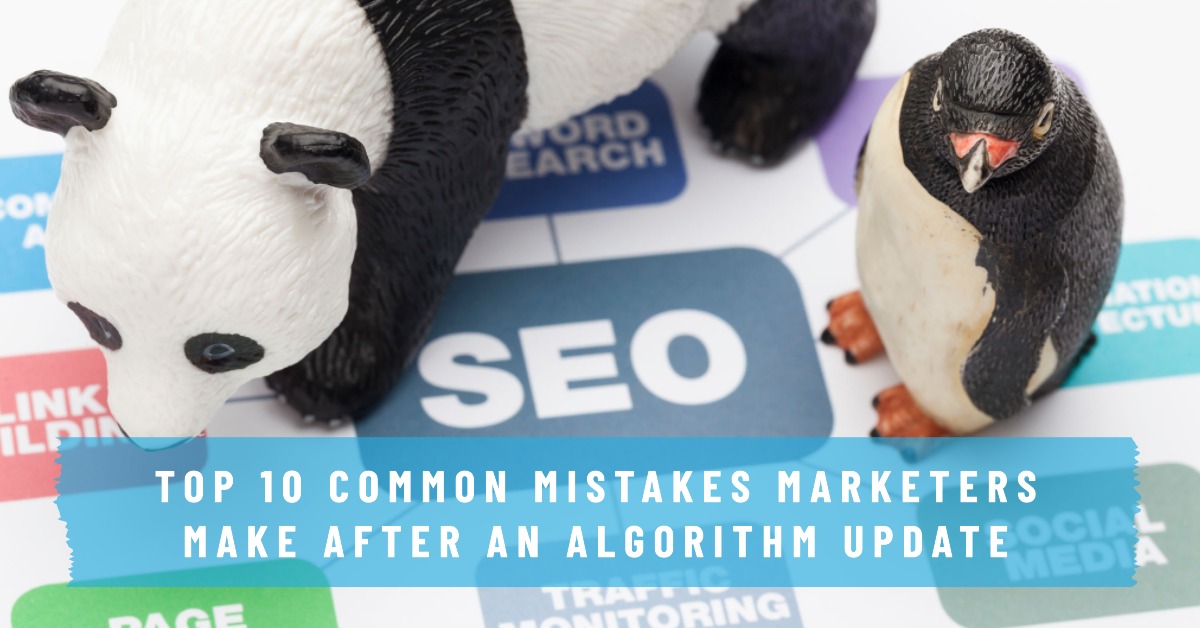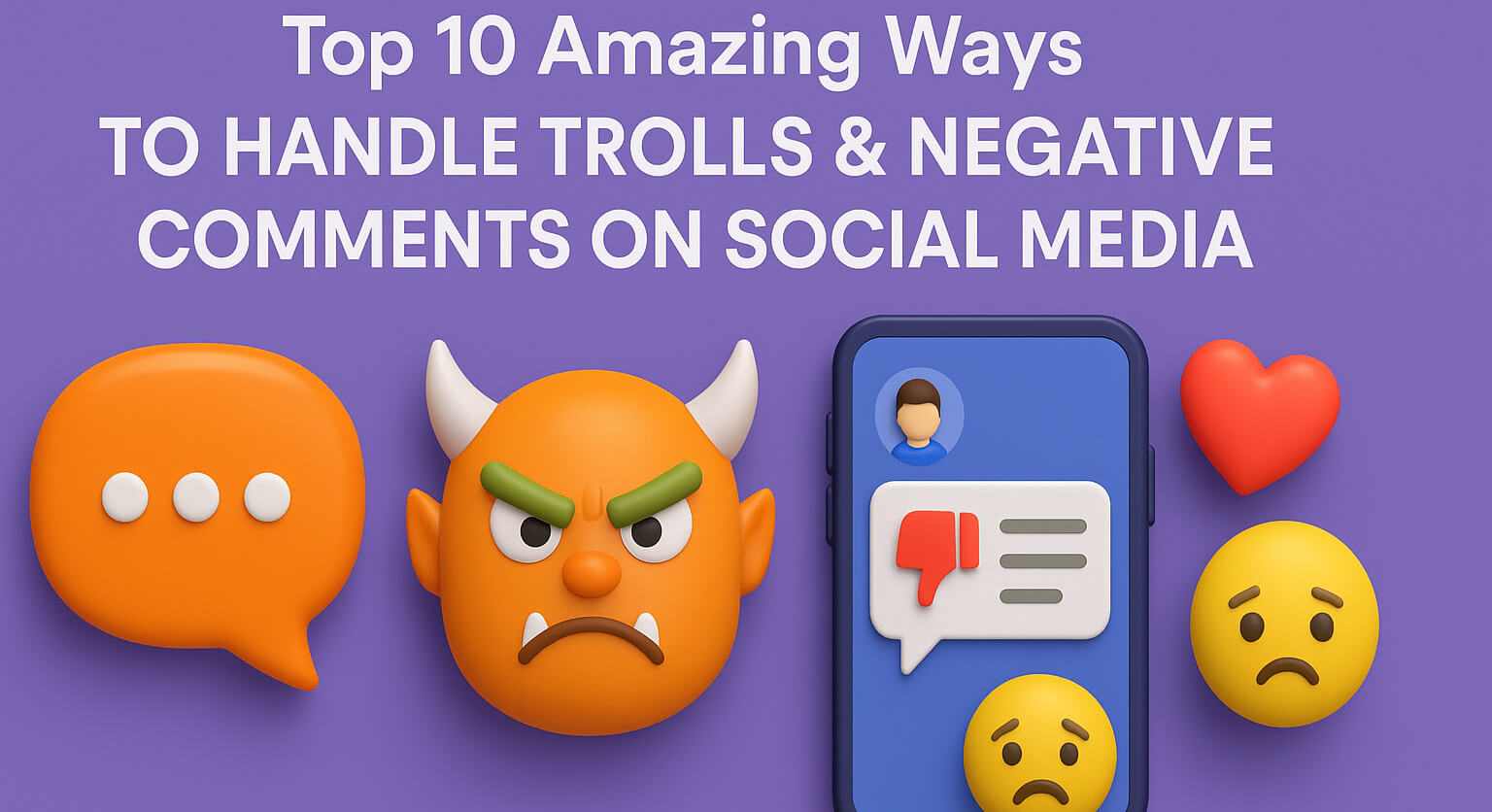
Top 10 Common Mistakes Marketers Make After an Algorithm Update
Algorithm updates
can greatly impact online marketing strategies. When search engines or social
media platforms change their algorithms, marketers often struggle to adapt.
These changes affect how content ranks and how users engage with it.
However, many
marketers make mistakes during this adjustment period that can hurt their
performance. They may ignore the changes, continue old practices, or panic
without analyzing the update properly.
These errors can
lead to loss of visibility, traffic, and engagement. It is important for
marketers to stay informed, make data-driven decisions, and adjust strategies
accordingly.
Today, with the
help of our best
digital marketers in Delhi, we will explore some common mistakes
marketers make after an algorithm update and how to avoid them.
Ignoring the Update
When marketers
ignore algorithm updates, they miss important changes in how search engines or
social media platforms rank content. These updates often change what works in
online marketing. If you don’t keep track of these updates, your website or
content might lose visibility, and traffic could decrease.
To fix this, stay
informed about Google algorithm updates. Follow trusted sources like Google’s official
blog or industry news. Regularly check your website’s performance using
analytics tools to see if the update is affecting your rankings.
Make changes to
your strategies based on the new rules, like adjusting your keywords or
improving user experience. Being proactive will help you stay ahead and
maintain your online presence.
Not Monitoring Performance
After an
algorithm update, your website’s performance can change. If you don't monitor
key metrics like traffic, rankings, or engagement, you might not notice these
changes. This can lead to missed problems, like drops in search visibility,
that could hurt your marketing efforts.
To fix this,
regularly check your website’s performance using tools like Google Analytics.
Keep track of important metrics such as bounce rate, organic search traffic,
and ranking for target keywords.
If you notice a
decrease in these areas, it may be due to the update. Use this information to
adjust your content or strategies and improve performance. Monitoring
performance helps you quickly spot issues and act.
Sticking to Old Tactics
Old marketing
strategies might not work after an algorithm update. For example, certain SEO
methods or content types that once helped you rank higher may now cause
penalties. If you keep using outdated tactics, your website might lose
visibility and traffic, as algorithms evolve to prioritize new trends and user
behaviors.
To fix this,
update your strategies according to the latest algorithm changes. Focus on
creating high-quality, engaging content that follows current best practices.
For SEO, use updated keyword strategies, optimize for mobile, and prioritize
user experience.
Stay flexible and
be ready to adapt your tactics to the new rules, ensuring your marketing
remains effective and aligned with the latest trends.
Neglecting User Experience
Algorithms now
prioritize user experience, meaning how people interact with your website
matters more than ever. If your website is slow, difficult to navigate, or hard
to read, it can hurt your rankings. Poor user experience can lead to high
bounce rates and low engagement, which negatively affects your visibility
online.
To fix this,
focus on improving user experience by making your website easy to use and fast
to load. Ensure your site is mobile-friendly, as many users access websites
from their phones.
Use clear
navigation and readable fonts and organize content in a way that’s easy for
visitors to find what they need. By enhancing user experience, you will improve
your rankings and keep visitors happy.
Over-optimizing Content
Over-optimizing
content means stuffing your content with too many keywords or focusing too much
on ranking. Search engines now prioritize high-quality, natural content. If
your content feels forced or unnatural, it may be penalized, and users might
leave quickly, which harms your rankings.
To fix this,
create content that focuses on providing value to your audience. Use keywords
naturally and make sure your writing flows well. Avoid keyword stuffing, and
instead, focus on answering user questions and solving problems.
Keep the content
engaging, informative, and easy to read. By prioritizing quality over excessive
optimization, you'll align with what search engines and users want, leading to
better performance.
Failing to Adapt to New Content Formats
Algorithms often
favor new content formats, such as videos, infographics, and interactive
elements, because they engage users more effectively. If you continue to focus
only on text-based content, you might miss out on opportunities to connect with
your audience. This can affect your visibility and engagement levels, as search
engines now prioritize diverse content types.
To fix this,
start incorporating different content formats into your strategy. Create
videos, infographics, or quizzes that are relevant to your audience and add
value. This helps increase user engagement and makes your content more
shareable.
By diversifying
your content, you can improve your rankings, attract more visitors, and stay
ahead of the competition, as algorithms evolve to prioritize engaging formats.
Not Updating Backlinks
Backlinks are
links from other websites to yours, and they help improve your ranking.
However, the value of backlinks can change after an algorithm update.
Low-quality or irrelevant backlinks can harm your site, while high-quality
links can boost your rankings. If you don’t update your backlinks, it can hurt
your website’s performance.
To fix this,
regularly check the backlinks pointing to your site. Use tools like Google
Search Console or backlink analysis tools to see which links are valuable and
which might be harmful.
Remove or disavow
low-quality links, and try to earn new, high-quality backlinks from trusted
sites in your industry. By maintaining a healthy backlink profile, you can
improve your search engine ranking and online visibility.
Panic Posting
After an
algorithm update, some marketers panic and post low-quality content quickly,
hoping to fix problems. This rush to create content often leads to poor-quality
posts that do not provide real value to users. It can harm your brand’s
reputation and negatively affect your website’s performance and rankings.
To fix this, stay
calm and avoid creating content in a hurry. Focus on providing helpful,
high-quality content that meets your audience’s needs. Take the time to
research what works best after the update and adapt your strategy accordingly.
Quality content
always wins in the long run, so ensure your posts are valuable, informative,
and well-crafted. This will help maintain your site’s performance and trust
with users.
Ignoring Mobile Optimization
Many users now
access websites from their phones, and search engines prioritize
mobile-friendly sites. If your website isn’t optimized for mobile, it may load
slowly, have broken links, or be hard to navigate on smaller screens. This can
hurt your rankings and cause visitors to leave quickly, affecting your online
presence.
To fix this,
ensure your website is mobile-responsive. This means it should adjust and look
good on any device, from smartphones to tablets. Test your site’s speed and
design on different screen sizes and make improvements where needed.
Use Google’s
Mobile-Friendly Test tool to check your site’s performance. By prioritizing
mobile optimization, you’ll improve your rankings and provide a better
experience for users.
Not Testing New Strategies
After an
algorithm update, many marketers stick to their old strategies without testing
new ones. This can limit your chances of finding the best ways to improve your
website’s performance. If you don’t experiment, you may miss out on new
opportunities that could help you rank better or engage your audience more
effectively.
To fix this, try
experimenting with different strategies after an algorithm update. Test changes
like new keywords, content formats, or user experience improvements. Monitor
your results closely to see what works best.
Use A/B testing
to compare different versions of your content and see which performs better. By
testing and adjusting your approach, you can discover the most effective
strategies for your website.
Related Offerings
Boost your online
ranking with our best SEO services in Delhi!
Experience the difference today. Also offer -






